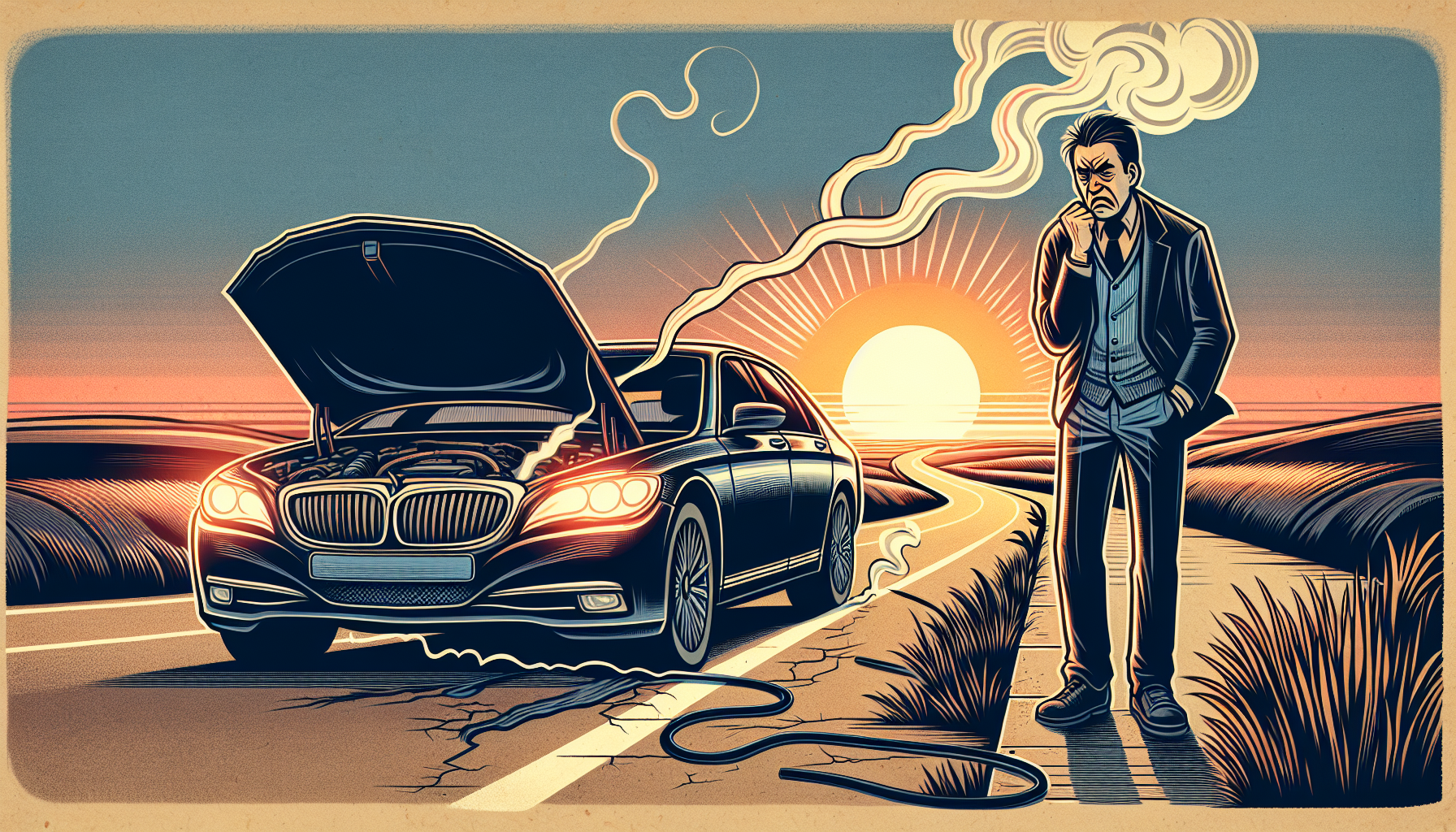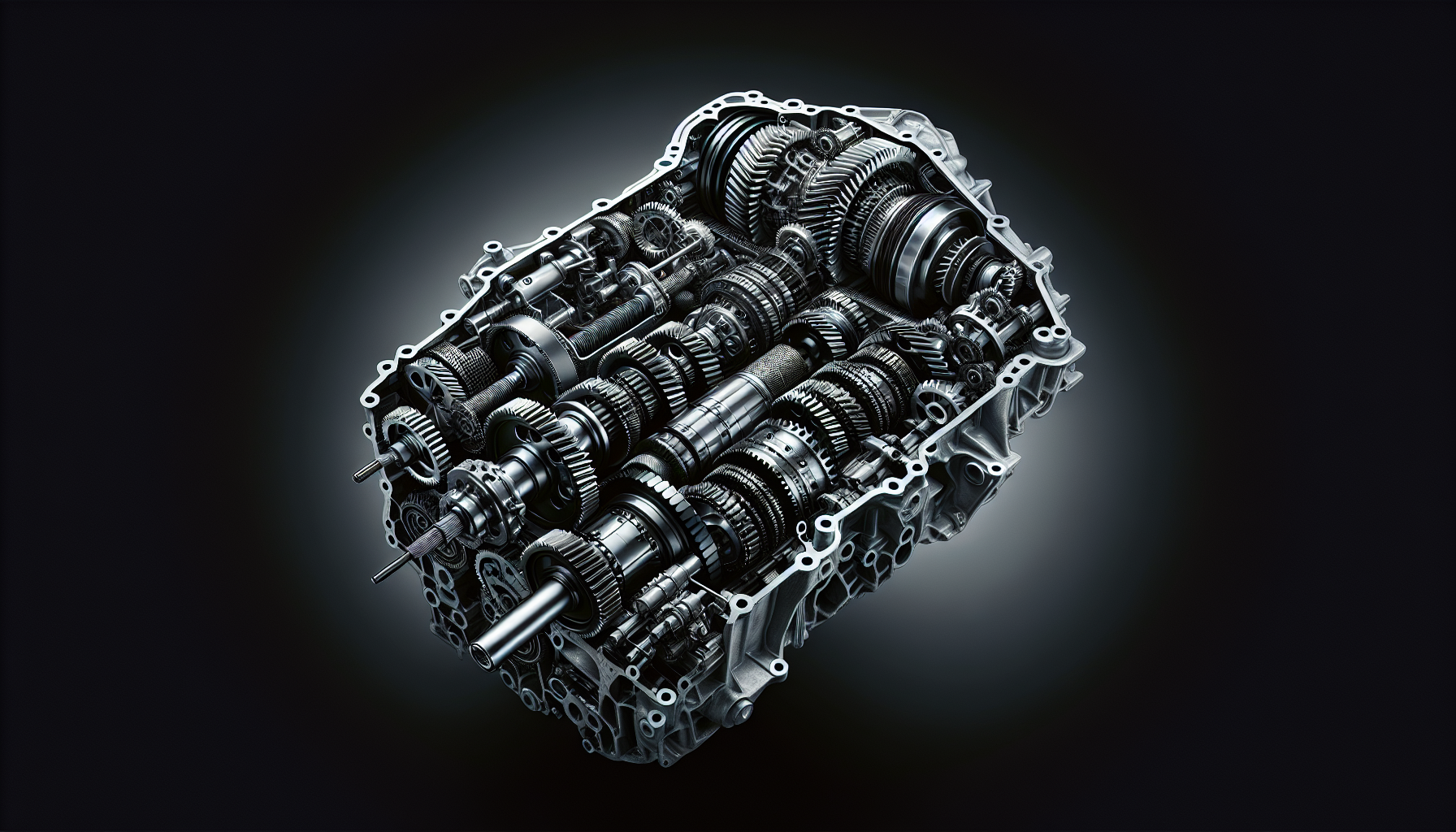Wondering “how long can you drive with a bad transmission?” Immediate attention is often necessary, but some cases allow for limited driving. This article breaks down critical factors like problem severity and driving habits that determine your vehicle’s usable timeframe, and offers maintenance tips and repair insights without delving into the financial implications of prolonged damage.
Key Takeaways
- Driving with a bad transmission can compromise safety and lead to higher repair costs, as well as potentially causing damage to other vehicle parts.
- The ability to drive with transmission issues varies based on the severity of problems, vehicle usage, and driving habits, with negative habits exacerbating transmission damage.
- Regular maintenance, timely repairs or replacements of the transmission, and adhering to good driving habits can extend a vehicle’s transmission lifespan and performance.
Understanding the Risks of Driving with a Bad Transmission

A well-maintained transmission is crucial for safe and efficient driving. Ignoring signs of transmission problems can lead to full transmission failure and expensive repairs. Worse yet, driving a vehicle with a bad transmission can damage other vehicle parts, leading to higher overall repair costs. The stakes are high, as safety issues can arise from a slipping transmission, endangering the driver, passengers, and others on the road.
Highlighting these risks emphasizes the need to tackle transmission issues promptly. Faulty transmissions may cause the car to lurch forward unexpectedly, potentially leading to accidents. A leaking transmission fluid increases the risk of overheating and breakdowns. Prompt management of transmission issues is necessary to prevent further damages and escalating costs.
Subsequent sections will provide a detailed examination of automatic and manual transmissions, as well as the perils of slipping gears and transmission failure, with expert insights from Mister Transmission.
Automatic Transmissions vs Manual Transmissions
Vehicles come equipped with either an automatic transmission or manual transmission, each with its own set of potential issues and maintenance requirements. Automatic transmissions are generally easier to handle, particularly for new drivers or those who often drive in heavy traffic. However, automatic transmissions are more complex and can be more expensive to repair compared to manual ones.
On the other hand, manual transmission cars offer more control over the vehicle, allowing for more efficient driving in certain conditions. However, they require more skill to operate and can lead to wear and tear if not used correctly. No matter the transmission type, continuously checking and changing transmission fluid is a proactive measure to prevent damage and guarantee seamless operation.
Slipping Gears and Transmission Failure
There are numerous manifestations of transmission problems. One common issue is slipping gears, characterized by difficulty in gear shifting and a noticeable thud or clunking sound when changing gears. You might also experience delayed vehicle movement or difficulty accelerating, indicating potential transmission issues.
Transmission failure, on the other hand, is more severe and can lead to a complete loss of power to the vehicle. Symptoms often include ominous sounds such as humming, buzzing, whining, or further clunking. Grinding noises and a marked difficulty in shifting gears can also indicate impending transmission failure. Ignoring these signs can result in hazardous situations and considerable repair costs.
Factors Influencing How Long You Can Drive with a Bad Transmission

The duration you can persist driving with a faulty transmission depends on several factors, including the exact transmission problems, car usage, type, and overall condition. Transmission issues can range from minor problems such as delayed shifting to major issues like complete transmission failure. Your driving habits also play a crucial role in the transmission’s lifespan.
The following sections will provide a deeper exploration of these factors.
Severity of Transmission Problems
The severity of transmission problems greatly influences your vehicle’s drivable lifespan. Minor transmission problems, such as delayed shifting, might not immediately hinder your driving experience. However, if addressed quickly, these could result in a repair that allows for thousands of more miles of driving. Conversely, catastrophic transmission issues can lead to a complete inability to engage the drive mechanism of the car, rendering it undrivable.
Keep in mind that even minor, neglected transmission issues can escalate into severe problems, significantly reducing the vehicle’s drivable lifespan. Hence, the time you can continue driving with transmission issues is often directly related to the initial severity of the problem and how quickly the problem is addressed.
Driving Habits and Their Impact on Transmission Lifespan

Your driving habits can significantly impact your transmission’s lifespan. Here are some habits to avoid:
- Ignoring the car’s cooling system, which can exacerbate conditions detrimental to the transmission’s longevity due to increased heat.
- Spinning the wheels when a vehicle is stuck, which can cause the transmission to overheat, leading to potential damage.
- Exceeding the vehicle’s towing capacity, which puts excessive stress and heat on the transmission, leading to accelerated wear.
Abrupt braking without necessity can strain the transmission, potentially causing overheating and damage to gearbox parts. Driving immediately without warming up the engine can lead to inadequate heating of engine components, necessitating costly transmission repairs. Steering clear of these harmful practices can prolong your transmission’s life and maintain your vehicle’s overall health.
Proper Maintenance and Prevention
Consistent maintenance is key in circumventing serious transmission issues and substantially prolonging its lifespan. This includes not only professional checks and services but also everyday habits that can help preserve your transmission’s health. Avoiding behaviors such as:
- Abusing the cooling system
- Spinning wheels when stuck
- Hauling excessive weight
- Running on low fluid levels
- Skipping engine warm-up
These behaviors can prevent overheating and transmission damage.
A well-maintained transmission not only has the potential to last over 300,000 miles but also contributes to better fuel efficiency and improved overall vehicle performance. Subsequent sections will elaborate on the significance of routine transmission fluid checks and changes, and the indicators of a transmission in need of attention.
Transmission Fluid Checks and Changes
Routine checks and changes are pivotal for the optimal functioning of your vehicle’s transmission. Transmission fluid plays a critical role by cooling, lubricating, and cleaning the internal components of the transmission, which is integral to its proper function. A low transmission fluid level can lead to inadequate lubrication and cooling in the gearbox, which may reduce the transmission’s lifespan, necessitating fluid changes every 30,000 to 60,000 miles, although the exact interval can vary by vehicle make and model. To ensure a smooth transmission fluid run, it’s essential to maintain the recommended fluid levels and change intervals.
To check the transmission fluid and engine oil, follow these steps:
- Make sure the engine is warm.
- Locate the fluid dipstick.
- Remove the dipstick and wipe it clean.
- Re-insert the dipstick and then remove it again to read the fluid level.
The average cost for a transmission fluid change is between $80 and $250, while a full transmission flush service ranges from $125 to $250. Vehicle owners can undertake the transmission fluid exchange on their own to potentially save the cost of labor.
Signs That Your Transmission Needs Attention
Recognizing the symptoms of a transmission in need of attention is vital to avoid severe damage and expensive repairs. Here are some common symptoms to look out for:
- Manual transmissions that produce a grinding noise during shifting can suggest a worn clutch
- Automatic transmissions might require calibration when rough shifting occurs
- The presence of unusual noises, like bumping sounds when a vehicle is in neutral, can point to transmission issues that might need new fluid or further examination.
Shaking and jerking are clear signs of a broken transmission, especially pronounced in manual transmission vehicles. A delayed response or hesitation when shifting from park to drive can signal a transmission issue that warrants immediate attention. Transmission fluid leaks from a vehicle indicate a problem, as the system is sealed and should not lose fluid; such leaks require professional inspection. Additionally, if you notice any issues with your gas pedal responsiveness, it’s essential to have your vehicle checked by a professional.
Overlooking early signs of transmission problems or the need for servicing can result in extended deterioration and substantial vehicle damage, potentially leading to major transmission repairs.
Repair Options and Costs
Fixing a transmission can incur significant costs. Here are some estimated costs:
- Minor maintenance: starting from $90
- Rebuilt transmissions: between $1100 and $2800
- Additional labor costs for removal and replacement: ranging from $500 to $1200
Please note that these costs can vary depending on the service center, vehicle make and model, and the flushing method used.
Although repair may initially appear as a cost-saving measure, it may lead to higher long-term expenses compared to rebuilding or replacing the transmission. If transmission repair or replacement costs are out of budget, obtaining a repair estimate can help in considering alternatives such as purchasing a new vehicle or selling the current car for parts.
Transmission Repair vs Replacement
Choosing between repair and replacement can be a difficult decision when dealing with a faulty transmission. Rebuilding a transmission can be less costly and might be completed quicker than replacing the entire unit, yet the rebuilt transmission may not reach a ‘like new’ condition. So, while you might save money upfront, the performance and longevity of the rebuilt transmission might not match that of a new one.
On the other hand, replacing the transmission can provide a ‘like new’ performance but comes with a higher cost. Therefore, considering the costs, vehicle age, and extent of damage is essential before making a decision. Consulting with a professional mechanic can provide valuable insight in making this choice.
Summary
In conclusion, maintaining a healthy transmission is critical for your vehicle’s performance, safety, and longevity. Recognizing the risks of driving with a bad transmission, understanding the differences between automatic and manual transmissions, and being aware of the signs of slipping gears and transmission failure can save you from expensive repairs and dangerous situations. Regular maintenance, including transmission fluid checks and changes, and adopting good driving habits can extend your transmission’s lifespan and enhance overall vehicle performance. Remember, when it comes to transmission care, prevention is always better than cure.
Frequently Asked Questions
How long does a transmission last?
Transmissions can last for 150,000 to 200,000 miles on average.
What happens when your transmission blows while driving?
When your transmission blows while driving, your engine may lose power, RPMs may increase, and the engine might emit a bad smell, leading to the vehicle not moving as the gears can no longer get power from the engine. The engine will idle, stall, or surge when shifting gears.
Can I drive my car if the transmission is slipping?
No, it is not recommended to drive your car if the transmission is slipping. It poses a safety risk and can make your car difficult to control.
How can I tell if my transmission is failing?
If you notice difficulty in gear shifting, clunking sounds, delayed vehicle movement, grinding noises, shaking, jerking, or fluid leaks, it’s best to consult a professional mechanic. Ignoring these signs may lead to further damage to your transmission.
How often should I change my transmission fluid?
You should change your transmission fluid every 30,000 to 60,000 miles, but the interval may vary based on your vehicle. Ensure to regularly check the fluid level to maintain optimal performance.
For more information, visit https://www.carmula.com/





 Who We Are
Who We Are Coverage Area
Coverage Area Donate
Donate